Nikolai Rimsky-Korsakov’s Trombone Concerto, composed in 1877, is a captivating work showcasing the trombone’s expressive qualities. Its technical demands and emotional depth make it a cherished piece for trombonists.
Overview of the Concerto
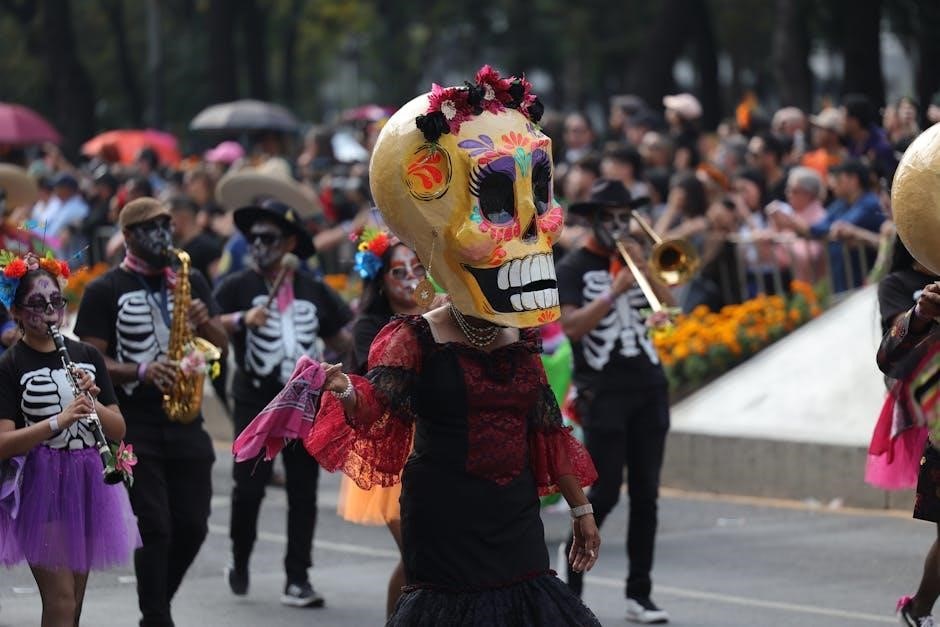
Nikolai Rimsky-Korsakov’s Trombone Concerto, composed in 1877, is a three-movement work showcasing the trombone’s technical and expressive capabilities. It was written for the Russian Navy Band and premiered in 1878. The concerto is structured into Allegro Vivace, Andante Cantabile, and Allegro movements, blending Russian Romanticism with intricate orchestration. The piece highlights the trombone’s ability to convey both lyrical melodies and virtuosic passages, making it a cornerstone of the trombone repertoire. Despite its relatively limited performance history compared to other orchestral works, the concerto remains a testament to Rimsky-Korsakov’s mastery of orchestration and his appreciation for the trombone’s unique voice.
Historical Background and Composition
Nikolai Rimsky-Korsakov composed his Trombone Concerto in 1877, primarily for the Cronstadt Naval Band, reflecting his connection to the Russian Navy. The work was premiered on March 16, 1878, in Konstadt, featuring trombonist Leonov. Rimsky-Korsakov’s orchestration expertise shines, blending the trombone with a brass-heavy ensemble. The concerto’s creation aligns with his exploration of Russian Romanticism, emphasizing nationalistic themes. Despite its initial popularity, the piece saw limited performances, yet it remains significant for its technical and emotional depth. Its availability in PDF formats has facilitated accessibility for modern study and performance, preserving its legacy as a cornerstone of trombone literature.
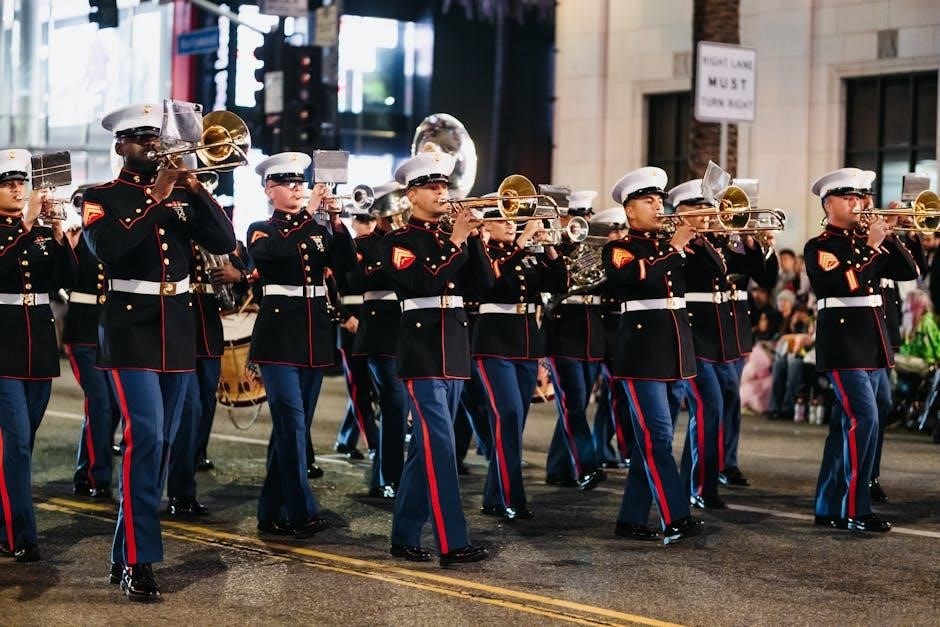
Structure and Movements of the Concerto
The concerto is divided into three movements: Allegro Vivace, Andante Cantabile, and Allegro. Each movement highlights the trombone’s technical and expressive capabilities, blending Russian Romanticism with intricate orchestration.
Movement 1: Allegro Vivace
The first movement, Allegro Vivace, opens with a lively orchestral introduction, setting a dynamic tone. The trombone enters with a bold, crisp theme, showcasing its agility and clarity. This movement features intricate passages, requiring precise articulation and technical mastery. The interplay between the trombone and orchestra creates a vibrant dialogue, highlighting the instrument’s ability to project both power and subtlety. Rimsky-Korsakov’s orchestration allows the trombone to shine, blending seamlessly with the ensemble while maintaining its distinctive voice. The Allegro Vivace demands a strong technical foundation, making it a challenging yet rewarding experience for performers.
Movement 2: Andante Cantabile
The Andante Cantabile movement is a lyrical and expressive contrast to the vibrant Allegro Vivace. It features a beautiful, soaring melody that highlights the trombone’s ability to produce rich, warm tones. The movement is characterized by its emotional depth, with the trombone engaging in a dialogue with the orchestra that emphasizes harmony and balance. Rimsky-Korsakov’s orchestration here is subtle, allowing the trombone to take center stage while maintaining a supportive accompaniment. This movement requires not only technical precision but also a deep sense of phrasing and musicality. The Andante Cantabile provides a moment of introspection, showcasing the trombone’s capacity for nuanced expression and connecting the listener to the heart of the concerto.
Movement 3: Allegro
The Allegro movement is a vibrant and dynamic conclusion to Rimsky-Korsakov’s Trombone Concerto. It opens with a lively orchestral introduction, setting the stage for a technically demanding and spirited dialogue between the trombone and the orchestra. The movement is characterized by its energetic rhythms and intricate passages, showcasing the trombone’s agility and brilliance. Rimsky-Korsakov’s masterful orchestration highlights the instrument’s ability to project both powerful crescendos and delicate articulations.

The Allegro also features moments of lyrical contrast, blending the trombone’s expressive qualities with the orchestra’s rich textures. This movement is a thrilling showcase of both technical virtuosity and musicality, bringing the concerto to a triumphant and satisfying close.
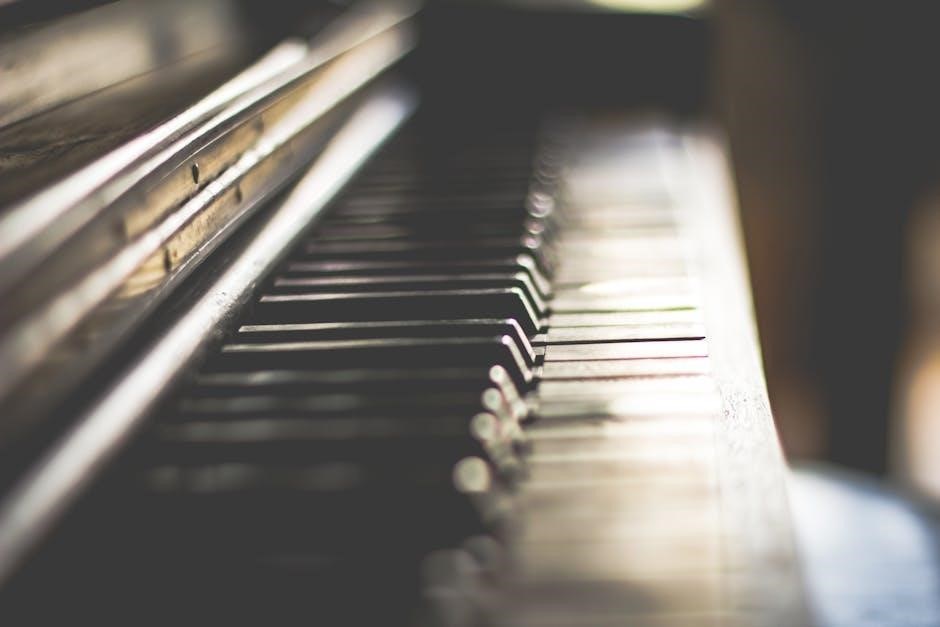
The Role of the Trombone in the Concerto
The trombone is the solo instrument, showcasing its technical and expressive capabilities. Rimsky-Korsakov highlights its nobility and grandeur, making it central to the concerto’s musical narrative and emotional depth.
Technical Demands and Challenges
Rimsky-Korsakov’s Trombone Concerto presents significant technical challenges, including intricate melodic lines, demanding passages, and complex rhythms. The trombonist must master glissando techniques, coordination, and precise articulation. The concerto’s harmonic language and emotional depth require a high level of musicality and control. Performers often find the technical demands daunting, leading to frustration. To overcome these challenges, focused practice, attention to detail, and a deep understanding of the piece are essential. The concerto’s unique requirements make it a benchmark for assessing a trombonist’s skill and artistry, ensuring its relevance in both performance and educational settings.
Emotional and Expressive Qualities
Rimsky-Korsakov’s Trombone Concerto is renowned for its emotional depth and expressive qualities, offering a rich exploration of the trombone’s sonic capabilities. The concerto captures the essence of Russian Romanticism, blending lyrical melodies with dramatic contrasts. The trombone’s role is both noble and epic, showcasing its ability to convey profound emotion. Players must connect with the music’s heartfelt passages, balancing technical precision with interpretive sensitivity. The concerto’s expressive qualities make it a cherished piece, providing a platform for trombonists to showcase their artistry and emotional range. Its ability to evoke powerful feelings underscores its enduring appeal, making it a cornerstone of the trombone repertoire and a testament to the instrument’s expressive potential.
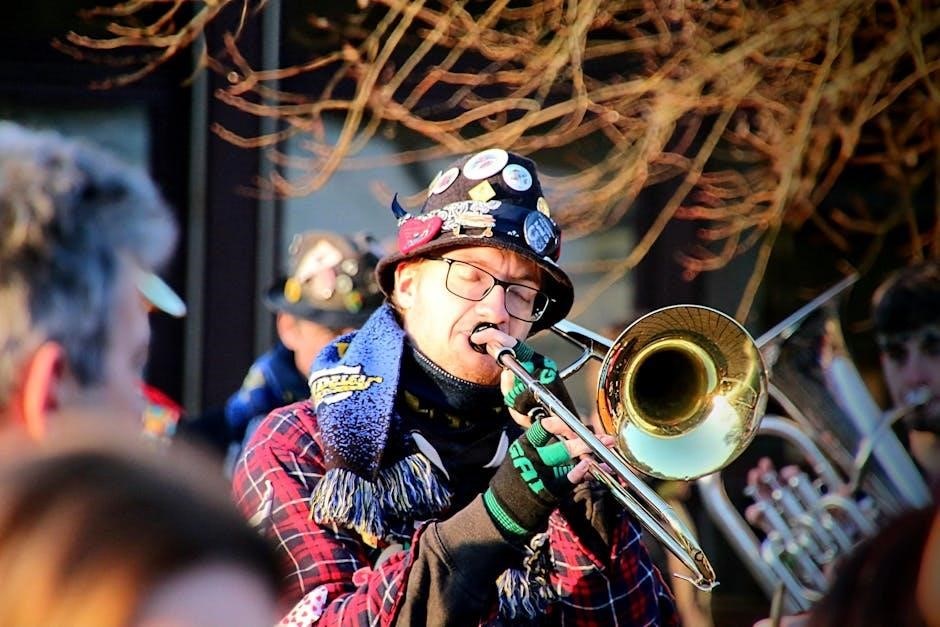
Availability of the Concerto in PDF Format
Rimsky-Korsakov’s Trombone Concerto is widely available in PDF format, with scores and parts accessible for download from various online repositories and music libraries, facilitating study and performance.
Sources for Downloading the Score
Sources for Downloading the Score
Several reputable platforms offer Rimsky-Korsakov’s Trombone Concerto in PDF format. Websites like International Musica and academic databases provide access to the score, often for free or through subscription. Additionally, music libraries and educational institutions frequently host downloadable versions, ensuring accessibility for study and performance. Some independent publishers also distribute the concerto digitally, catering to both professionals and enthusiasts. When searching, using specific terms like “Rimsky-Korsakov Trombone Concerto PDF” yields the most relevant results. Always ensure downloads are from legal and trusted sources to support copyright compliance and musical heritage.
Importance of the PDF Version for Study and Performance
The PDF version of Rimsky-Korsakov’s Trombone Concerto is invaluable for musicians and scholars. It provides a portable, high-quality format for in-depth study, allowing detailed analysis of the score’s nuances. Trombonists can easily annotate and mark up the digital version, facilitating effective practice and preparation for performances. Additionally, the PDF format ensures accessibility across devices, making it ideal for rehearsals, auditions, and classroom use. For educators, the PDF serves as a versatile teaching tool, enabling the exploration of the concerto’s technical and expressive challenges. Its availability also supports the preservation of this significant work, ensuring its continued relevance in musical education and performance.
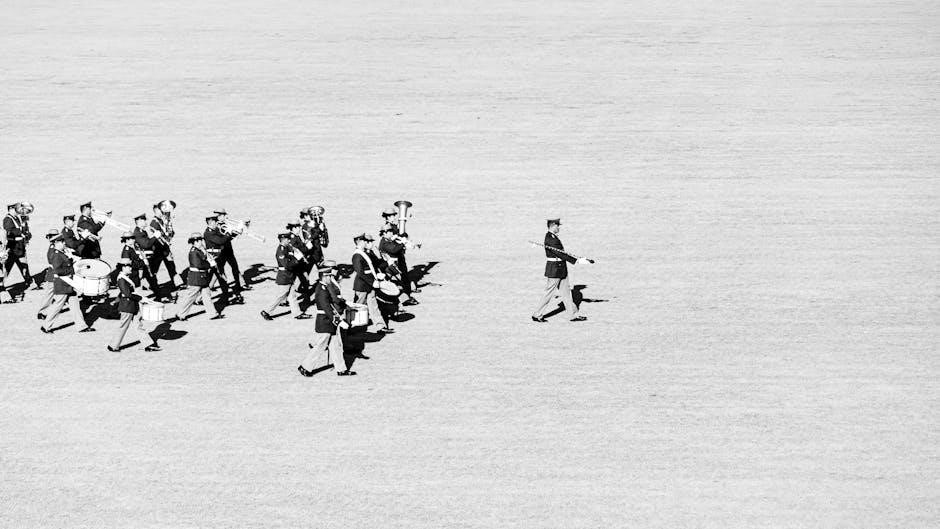
Performance Considerations and Tips
Balancing the trombone with orchestral accompaniment is crucial. Focus on precise articulation and dynamic control to maintain clarity. Regular practice of technical passages ensures mastery and confidence during performances.
Orchestral Accompaniment and Balance
The orchestral accompaniment in Rimsky-Korsakov’s Trombone Concerto is meticulously crafted to complement the trombone’s rich timbre. Conductors must ensure a balanced blend, avoiding overwhelming the soloist. Woodwind sections provide harmonic texture, while brass and percussion add dynamic contrast. String sections often support the melody, creating a lush backdrop. Proper phrasing and articulation from both the trombone and orchestra are essential for cohesive performances. Attention to tempo and rubato ensures the soloist’s expressiveness shines. Rehearsals should focus on achieving a harmonious dialogue between the trombone and ensemble, preserving the concerto’s Romantic essence. This balance is key to delivering a compelling and emotionally resonant interpretation of the work.
Practice Techniques and Interpretation
Mastering Rimsky-Korsakov’s Trombone Concerto requires meticulous practice and interpretative insight. Trombonists should begin with slow, deliberate practice of technical passages, focusing on accuracy and control. Long tones and scales can build the endurance needed for the concerto’s demanding sections. Musicality is equally important; phrasing and dynamics should reflect the Romantic era’s expressive qualities. Using a metronome can help solidify rhythms, while listening to recordings provides interpretative guidance. Emphasizing the trombone’s lyrical capabilities is key, as the concerto often showcases its singing qualities. Understanding the historical context and Rimsky-Korsakov’s orchestration style further enhances interpretation. Regular practice with a pianist or conductor is advisable to refine balance and timing. Patience and dedication are essential to unlocking the concerto’s full artistic potential.
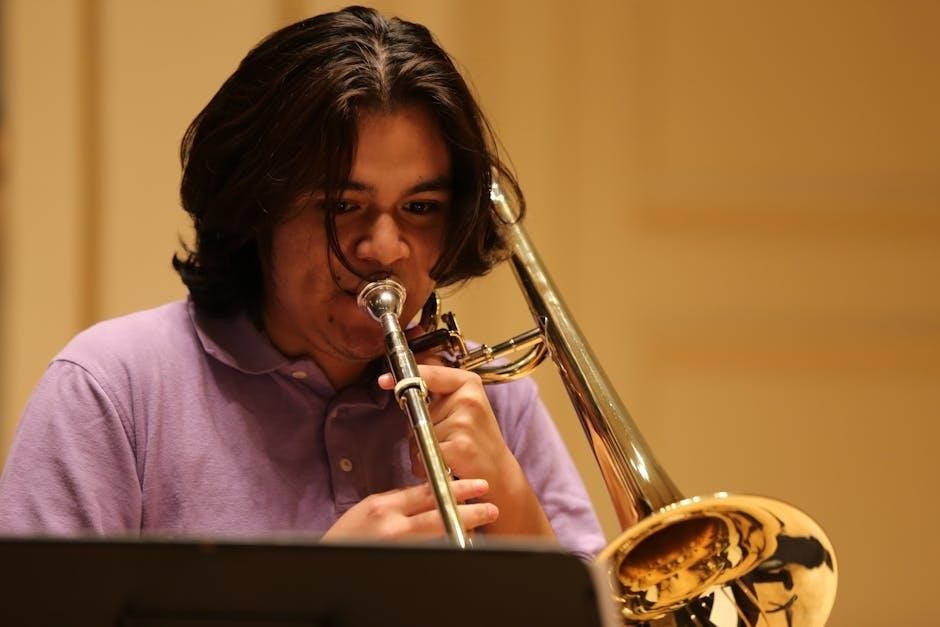
Reception and Impact of the Concerto
Rimsky-Korsakov’s Trombone Concerto is celebrated for its emotional depth and technical brilliance, leaving a lasting impact on trombone repertoire. Its intricate passages and lyrical melodies resonate deeply with audiences, making it a beloved yet challenging piece for performers and a cornerstone of Romantic-era music.
Modern Performances and Recordings
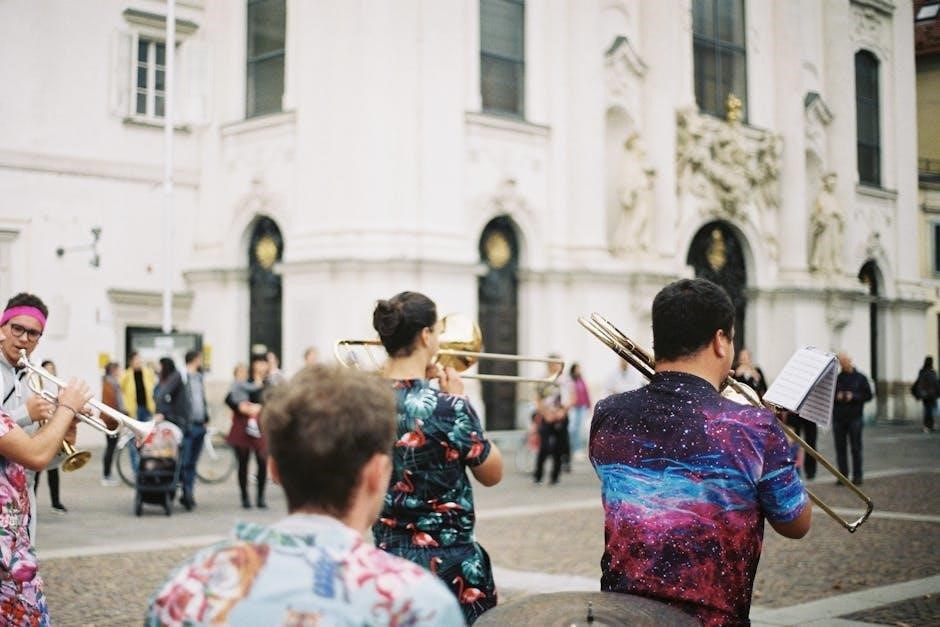
Rimsky-Korsakov’s Trombone Concerto remains a popular choice in modern performances, often featured in classical music playlists and streaming platforms. Its emotional depth and technical challenges continue to attract both professional trombonists and audiences. Many renowned artists have recorded the concerto, showcasing its enduring appeal. The piece is frequently performed in orchestral and band settings, highlighting its versatility. Additionally, the concerto’s availability in PDF format has made it accessible for study and performance, ensuring its relevance in contemporary music education. Its intricate melodies and harmonic richness resonate with modern listeners, solidifying its place in the trombone repertoire.
Critical Reviews and Audience Reception
Rimsky-Korsakov’s Trombone Concerto has garnered widespread acclaim for its emotional depth and technical brilliance. Critics often highlight the trombone’s role as a solo instrument, praising its agility and lyrical qualities. The concerto is frequently described as a cornerstone of the trombone repertoire, with audiences drawn to its dramatic contrasts and expressive melodies. Performances are often met with standing ovations, as the interplay between the trombone and orchestra creates a captivating experience. The availability of the concerto in PDF format has further enhanced its accessibility, allowing musicians to study and perform it with greater ease. This timeless work continues to resonate with both classical enthusiasts and newcomers, solidifying its place in the hearts of audiences worldwide.
Pedagogical Value of the Concerto
Rimsky-Korsakov’s Trombone Concerto is a valuable teaching tool, offering insights into phrasing, dynamics, and articulation. Its PDF availability aids students in practice, analysis, and performance preparation effectively.
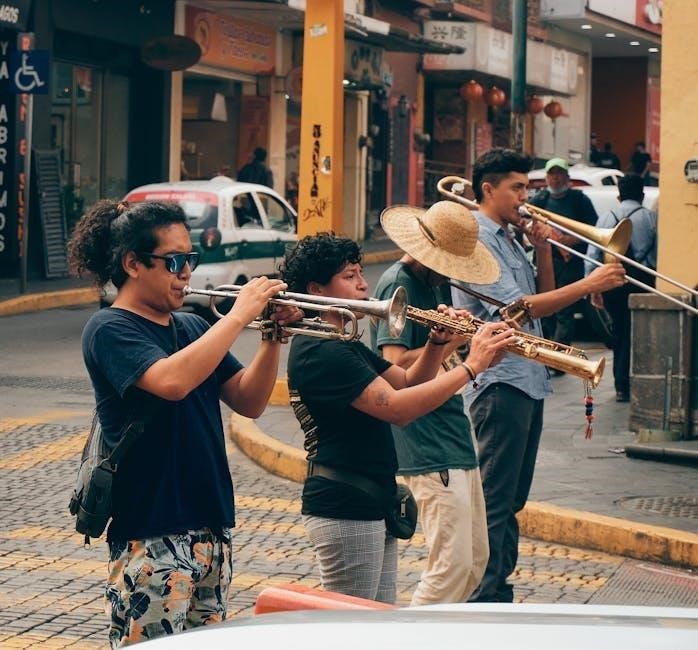
Use in Music Education and Trombone Studios
The Rimsky-Korsakov Trombone Concerto is widely used in music education and trombone studios due to its technical and expressive challenges. Many collegiate trombone studios have adopted this piece as a core part of their curriculum, helping students develop essential skills. The concerto’s availability in PDF format makes it easily accessible for study and practice. Instructors often assign specific sections to focus on areas such as phrasing, dynamics, and articulation. The concerto’s harmonic richness and melodic lines provide a comprehensive learning experience, preparing students for advanced repertoire. Its inclusion in music education underscores its significance in the development of young trombonists aiming to master classical techniques and interpretative nuances.
Significance for Young Trombonists
Rimsky-Korsakov’s Trombone Concerto holds immense significance for young trombonists, serving as a gateway to mastering advanced techniques and musical expression. Its demanding passages and lyrical melodies provide a comprehensive workout, fostering technical prowess and artistic sensitivity. The concerto’s availability in PDF format allows easy access for study and performance, making it a staple in educational settings. Young musicians benefit from tackling its challenges, which build confidence and refine their skills. Additionally, the concerto’s emotional depth offers a platform for developing interpretative abilities, essential for any aspiring trombonist. This work not only enhances technical facility but also nurtures a deeper understanding of Romantic-era music, enriching the artistic growth of young players.
Rimsky-Korsakov’s Trombone Concerto remains a vital work in the trombone repertoire, offering both technical challenges and emotional depth. For further study, the PDF version of the score is widely available, providing valuable insight for performers and educators. Additionally, resources such as orchestration guides, masterclasses, and recordings can enhance understanding and interpretation. Exploring books like Rimsky-Korsakov’s Principles of Orchestration and seeking out performances by renowned trombonists can further enrich one’s connection to the piece. Engaging with these resources ensures a deeper appreciation of the concerto’s significance in both historical and contemporary musical contexts.
